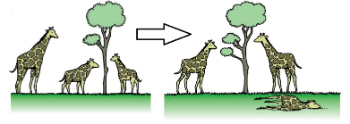Gene therapy is a procedure that introduces functional genes into cells with the aim of treating diseases.
Gene therapy uses recombinant DNA techniques to replace or manipulate troubled genes. The introduction of a healthy gene will correct information that is wrong or missing from an individual's DNA, which can lead to a cure for the disease or alleviation of its symptoms.
In short, we can say that gene therapy is the exchange of defective genes for healthy genes.
The advance of genetics contributed to the emergence of gene therapy, enabling scientists to modify an individual's gene pool.
Currently, gene therapy is in full development. New studies and discoveries emerge every day, representing an opportunity for cure or treatment for various diseases, such as cancer, diabetes, hemophilia and AIDS.
In Brazil, treatment with gene therapy is not yet a reality. However, there are several Brazilian scientists involved in gene therapy research.
How does gene therapy work?
The gene therapy technique consists of introducing a healthy gene into the body, considered the gene of interest (therapeutic gene). This gene is found in a DNA or RNA molecule that must be introduced into an organism.
However, DNA is rarely introduced directly into an organism. A carrier is needed to transport the DNA to its destination, where the exchange of genes will take place. This loader is called a vector. Vectors can be plasmids or viruses.
Generally, the virus is chosen to be the vector for a particular gene. This is because viruses are, of course, specialized in invading cells and introducing genetic material into them. However, to be a vector, the virus undergoes modifications, in which genetic information that can trigger an immune response is removed, only its essential genes are kept.
The introduction of the gene into the body can take place in two ways:
- in vivo form: the vector is introduced directly into the organism. This way is considered more efficient and less expensive. However, the correct address is necessary, if a gene is destined for the liver, it must be ensured that it reaches this organ and not the pancreas, for example.
- ex vivo form: the individual's cells are removed, modified and reintroduced. It's a more difficult method, but easier to control.
Also read about Recombinant DNA.
Types of Gene Therapy
There are two types of techniques in gene therapy: germinative and somatic.
THE germinative technique it consists of introducing genes into the zygote, the cell resulting from fertilization, or into eggs and sperm. Thus, the cells that originate from these germ cells will have the gene of interest in their genome.
THE somatic technique it consists of introducing genes into somatic cells, that is, non-germ cells. Somatic cells make up the bulk of the organism. This technique is more used and there is no transmission of genes to offspring, as occurs in the germinative technique.
Gene Therapy and Diseases
Initially, gene therapy was aimed only at the treatment of monogenic diseases, characterized by the absence or deficiency of a gene. Examples of monogenic diseases are cystic fibrosis, hemophilia and muscular dystrophies.
However, currently, gene therapy has also turned to the treatment of acquired diseases, as these have a higher incidence in the human population. Thus, AIDS and cancer became an object of study in gene therapy.
Learn more about the genetic diseases.
Today, gene therapy already presents advances in the treatment of some diseases. For example, in 2013, American scientists managed to genetically modify T lymphocytes and made them resistant to the entry of the virus. HIV. Studies with humans are still lacking, but the results found represent a possibility of cure for the disease.
As gene therapy is still improving and growing, there are also risks. In 1999, a patient died after injecting a vital vector during a clinical trial. Furthermore, there are still several ethical issues involved with the technique.
Learn more, read also:
Genetic engineering
Biotechnology
Stem cells


